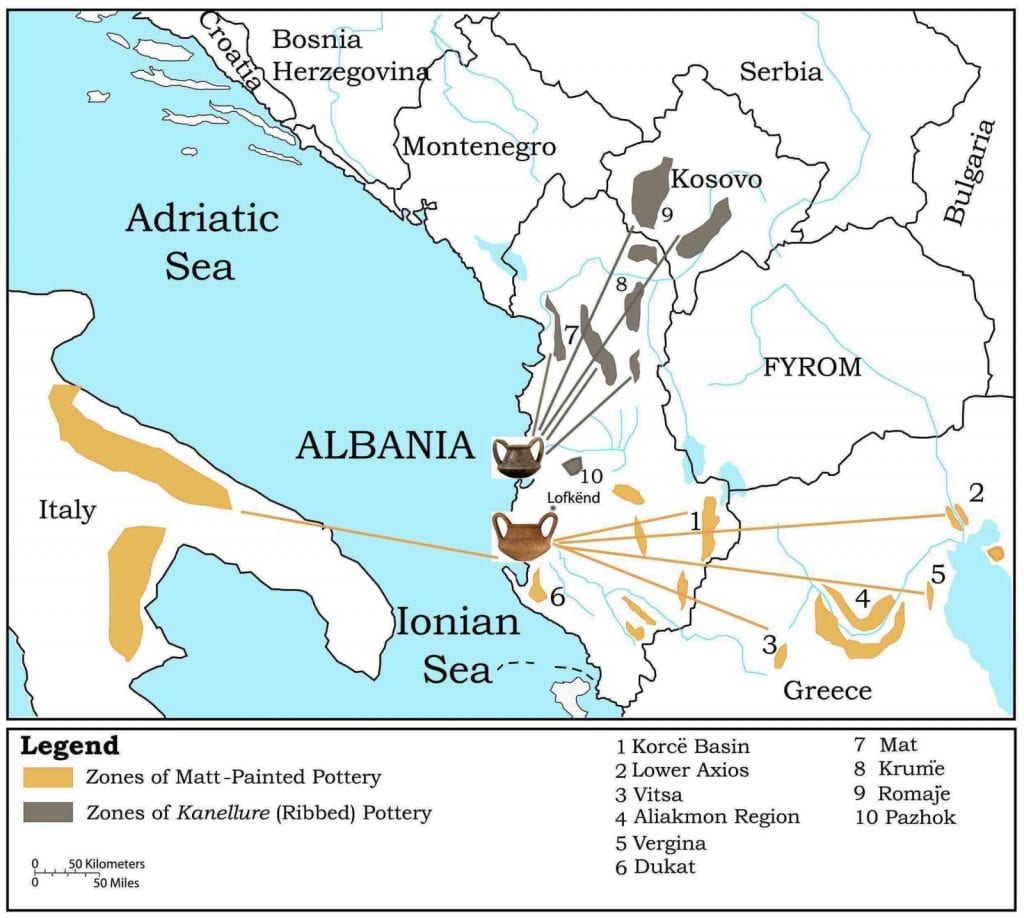PaleoRevenge
Regular Member
- Messages
- 952
- Reaction score
- 663
- Points
- 93
FYI this was posted by mount123 in the Bronze Age forum:
"Archaeogenomic pilot research of Kamenice, a prehistoric Albanian tumulus (1600-500 BCE)
Abstract:
"Situated in southeastern Albania at the interface of the Aegean and the Adriatic, the Tumulus of Kamenice was used for inhumations from 1600 to 500 BCE. In this work, we generated genome-wide SNP data for 25 individuals from Kamenice that span the full time transect, providing the unique and first possibility for insights into biological relatedness and demography of a single tumulus in Late Bronze Age and Iron Age Albania.
We identified a genetically homogeneous population throughout the respective time in contrast to all societal transformations in the wider region. Moreover, we found evidence for a patrilineal society, within which all the males’ Y chromosomes belong to two distinct sub-groups of R1b1a1b (M269). We identified the biological relatedness up to 6th degree with IBD analysis. The amount of relatedness raised after 750 BCE. We also detected a signature of a population size decrease around 750 BCE using HapROH, which coincides with the prevalence of Y chromosome lineage R1b1a1b1b3 and a new way of grave construction. Besides, a female individual was biologically related to individuals both before and after 750 BCE. Overall, all the ancient DNA evidence support a local population bottleneck event."
https://www.eupedia.com/forum/threa...an-case/page42?p=665993&viewfull=1#post665993
Looks like South Albania starts out as R1b-PF7563 and is joined by R1b-Z2103 in LBA. This is the culture group that is parent of Messapii. I am guessing the paper comes out later this year?
"Archaeogenomic pilot research of Kamenice, a prehistoric Albanian tumulus (1600-500 BCE)
Abstract:
"Situated in southeastern Albania at the interface of the Aegean and the Adriatic, the Tumulus of Kamenice was used for inhumations from 1600 to 500 BCE. In this work, we generated genome-wide SNP data for 25 individuals from Kamenice that span the full time transect, providing the unique and first possibility for insights into biological relatedness and demography of a single tumulus in Late Bronze Age and Iron Age Albania.
We identified a genetically homogeneous population throughout the respective time in contrast to all societal transformations in the wider region. Moreover, we found evidence for a patrilineal society, within which all the males’ Y chromosomes belong to two distinct sub-groups of R1b1a1b (M269). We identified the biological relatedness up to 6th degree with IBD analysis. The amount of relatedness raised after 750 BCE. We also detected a signature of a population size decrease around 750 BCE using HapROH, which coincides with the prevalence of Y chromosome lineage R1b1a1b1b3 and a new way of grave construction. Besides, a female individual was biologically related to individuals both before and after 750 BCE. Overall, all the ancient DNA evidence support a local population bottleneck event."
https://www.eupedia.com/forum/threa...an-case/page42?p=665993&viewfull=1#post665993
Looks like South Albania starts out as R1b-PF7563 and is joined by R1b-Z2103 in LBA. This is the culture group that is parent of Messapii. I am guessing the paper comes out later this year?


